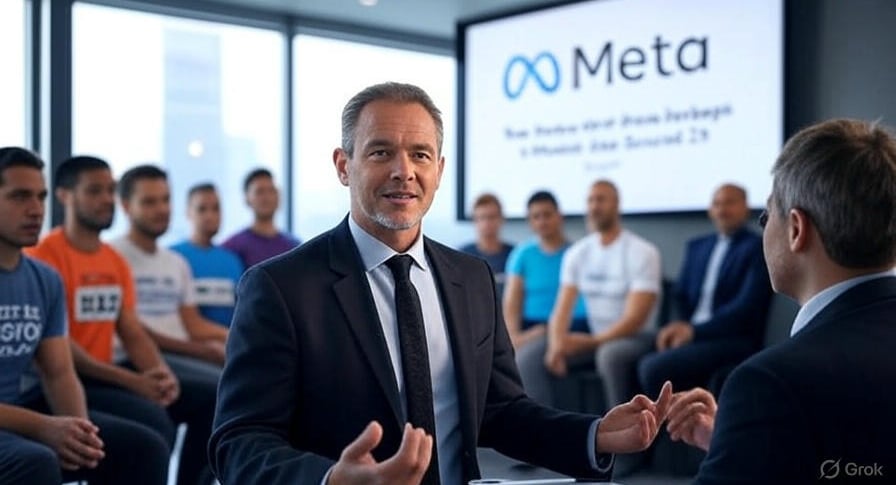The Future of Meta Ads in 2025: Core Strategies for Success
5/1/20254 min read


The Future of Meta Ads in 2025: Core Strategies for Success
Welcome to our latest insights on Meta Ads! In this blog post, we’re diving into the core strategies that will dominate Meta advertising in 2025 and beyond. These are not fleeting trends but fundamental principles that will shape how you succeed with Meta Ads for at least the next year. Whether you're a seasoned marketer or just starting out, this guide is crucial for anyone looking to master Meta Ads. Let’s get started!
1. Creative is the New Targeting
You’ve likely heard this before, but let’s break it down: creative is the new targeting. Audience-based targeting is losing its edge, and here’s why. Traditionally, marketers test multiple audiences—say, people interested in shoes, technology, or fashion. But what happens when these audiences overlap significantly? For instance, someone who likes shoes might also be into tech, creating a muddy overlap that makes it hard to define unique audience segments.
When you exhaust your audience options due to this overlap, scaling becomes a challenge. If your "winning" audience stops performing, you’re stuck. Meta’s advanced algorithms and pixel data from millions of websites now make audience selection less critical. Meta can identify the right audience for your ad without you micromanaging interest-based targeting.
What Meta can’t do is create your creatives or craft your offers. Your focus should shift to developing compelling videos, images, and offers. Creative scaling—testing one, five, or even 500 creatives—gives you an edge over competitors. Unlike audiences, which saturate quickly, creatives offer endless opportunities for innovation and scaling.
Key Takeaway: Invest in creative strategies. Make your videos sharper, your products stronger, and your services better. Let Meta handle audience discovery while you focus on standout creatives.
2. Attribution Settings: The Backbone of Optimization
Attribution is critical for scaling campaigns effectively. Meta’s algorithms optimize based on the results they attribute to your ads. If your attribution settings are off, your campaigns won’t scale, no matter how good your results seem.
For instance, small budgets (e.g., ₹5,000/day) might not reveal attribution issues, but when you scale to larger budgets, discrepancies in cross-platform or cross-domain tracking can break your campaigns. Aim for at least 90% accurate attribution to ensure Meta’s systems correctly identify which ads drive conversions.
Key Takeaway: Master attribution settings to align your campaign data with Meta’s optimization algorithms. Use Meta’s built-in tools and avoid over-relying on third-party solutions unless necessary.
3. The Decline of Meta Pixel and the Rise of New Tracking Solutions
Meta Pixel, once the cornerstone of web-based tracking, is likely on its way out. Why? Meta is introducing more advanced and cost-effective solutions like the Conversions API (CAPI) and, potentially, the Signals Gateway. These tools offer better tracking capabilities, especially with browser limitations impacting pixel performance.
For example, implementing CAPI via server-side Google Tag Manager (GTM) or tools like Stape is becoming standard for advanced advertisers. These solutions provide more robust data collection than traditional pixels. If you’re still relying solely on Meta Pixel, it’s time to explore these alternatives to stay ahead.
Key Takeaway: Start transitioning to CAPI and other advanced tracking solutions. Check out resources like advanced tracking courses on platforms like learns.com for in-depth guidance.
4. Conversational Ads: The Power of Click-to-Message
Meta is doubling down on conversational ads, such as click-to-WhatsApp and click-to-Messenger campaigns. These ads reduce friction in the purchase journey by allowing conversions directly through messaging platforms. With Meta’s strong messaging ecosystem (WhatsApp and Messenger), expect more features that enable one- or two-click solutions, bypassing traditional website funnels.
This shift is ideal for businesses aiming to streamline customer interactions and drive purchases through direct communication.
Key Takeaway: Experiment with click-to-message ads to leverage Meta’s messaging ecosystem for smoother conversions.
5. The Rise of First-Party Data
First-party data is becoming a game-changer for Meta Ads. By integrating Customer Relationship Management (CRM) systems or Customer Data Platforms (CDPs) with Meta, you can provide detailed feedback on lead quality, purchase stages, and product-specific conversions. For example, you can differentiate between high-value and low-value purchases or optimize campaigns for specific products.
This granular data allows Meta to optimize campaigns more effectively, especially for larger accounts. While small accounts may not see immediate benefits due to the time required to collect data, first-party data will soon be critical for all advertisers.
Key Takeaway: Set up offline event tracking and integrate first-party data to optimize campaigns for specific outcomes, like high-value product sales.
6. Creator and Brand Ad Integration
User-Generated Content (UGC) and creator collaborations are set to dominate Meta Ads. Brands are increasingly partnering with influencers to create authentic, UGC-style ads. For example, a landing page builder might sponsor a creator to produce videos that the brand can use as scalable ad content. This approach combines the authenticity of influencer content with the reach of paid ads.
Meta is building an ecosystem to support these collaborations, making it easier for brands to launch UGC-style campaigns at scale.
Key Takeaway: Explore creator collaborations to produce authentic, high-performing ad content that resonates with your audience.
Conclusion
The future of Meta Ads in 2025 is about embracing creative strategies, mastering attribution, adopting advanced tracking solutions, leveraging conversational ads, prioritizing first-party data, and integrating creator content. Audience-based scaling is fading, and creative scaling is taking its place. By focusing on these core principles, you’ll stay ahead of the curve and drive better results.
If you’re running Meta Ads or planning to start, share this post with your team or colleagues. These insights will guide your strategy for the next year and beyond. Stay tuned for more updates, and happy advertising!
© 2025. All rights reserved.
Email : dreamface@newportalai.com
Ai Tool
Product
Company
Follow Us
Try on Desktop
Avater Video
Ai Video
Ai Photo


